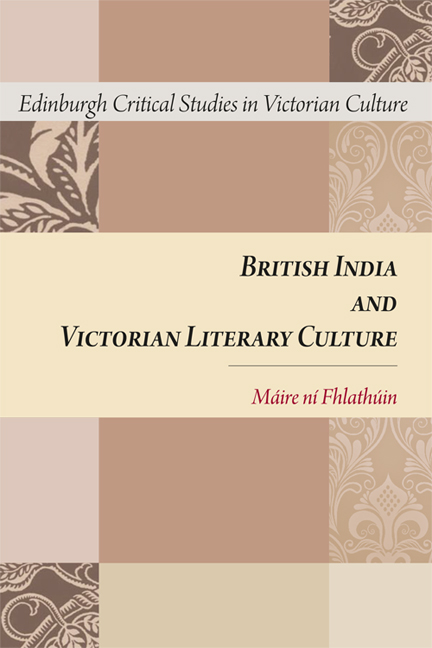Book contents
- Frontmatter
- Contents
- Series Editor's Preface
- Acknowledgements
- A Note on Terms
- Introduction
- Part I Experiences of India
- Part II Representations of India
- 4 European Nationalism and British India
- 5 Romantic Heroes and Colonial Bandits
- 6 Imagining India through Annals and Antiquities of Rajast'han
- 7 Transformations of India after the Indian Mutiny
- Afterword: Reading India
- Bibliography
- Index
4 - European Nationalism and British India
from Part II - Representations of India
Published online by Cambridge University Press: 05 August 2016
- Frontmatter
- Contents
- Series Editor's Preface
- Acknowledgements
- A Note on Terms
- Introduction
- Part I Experiences of India
- Part II Representations of India
- 4 European Nationalism and British India
- 5 Romantic Heroes and Colonial Bandits
- 6 Imagining India through Annals and Antiquities of Rajast'han
- 7 Transformations of India after the Indian Mutiny
- Afterword: Reading India
- Bibliography
- Index
Summary
The representation of Indians, and in particular of Hindus, in literature by British writers underwent a change in the early decades of the nineteenth century. Eighteenth- century stereotypes of the ‘mild Hindoo’, alien to British ways of thinking because of the ‘idolatrous’ nature of their religious beliefs, and considered weak for their subjection to the Muslim rulers of the Mughal Empire, gave way to a more complex portrait. This process is influenced by changing British and European ideas about the relationship between individuals and states, as well as by developing British interactions with a wider range of indigenous groups on the Indian subcontinent. Like most of the literature of British India, the texts circulating this set of representations draw on several different sources. One is the mainstream literary tradition of Western Europe (which was also, of course, itself partly shaped by literary encounters with the Orient, or with the ‘internal orients’ of places like Highland Scotland, in the work of writers such as Scott, Byron and Shelley). Another is drawn from the indigenous traditions of India: the archives of historical, mythological and literary narratives compiled and circulated by British scholars collecting vernacular sources. The third is the writers’ lived experience of India, and their apprehension of the particular socio- economic and political forces driving British interactions with and representations of Indians.
In British India, Romanticism's turn to the past had a geographical as well as a historical dimension. The British concept of India as organised on lines similar to those of medieval Europe, and in particular the insistence of influential scholars like James Tod on presenting the ‘martial races’ of India as feudal societies, meant that the look to history in Romantic- period Europe could become, in India, a view across the landscape. The Highlands of Scotland, for example, are replaced by the mountains of various unspecified but picturesque Indian locations; and while Scott set his action in a Jacobite past, his imitators in British India could plausibly set their bandit romances in their own present day. The Romantic ideal of the primitive is in India found not in the past but in the geographically far reaches of the colonial state.
- Type
- Chapter
- Information
- British India and Victorian Literary Culture , pp. 95 - 103Publisher: Edinburgh University PressPrint publication year: 2015



